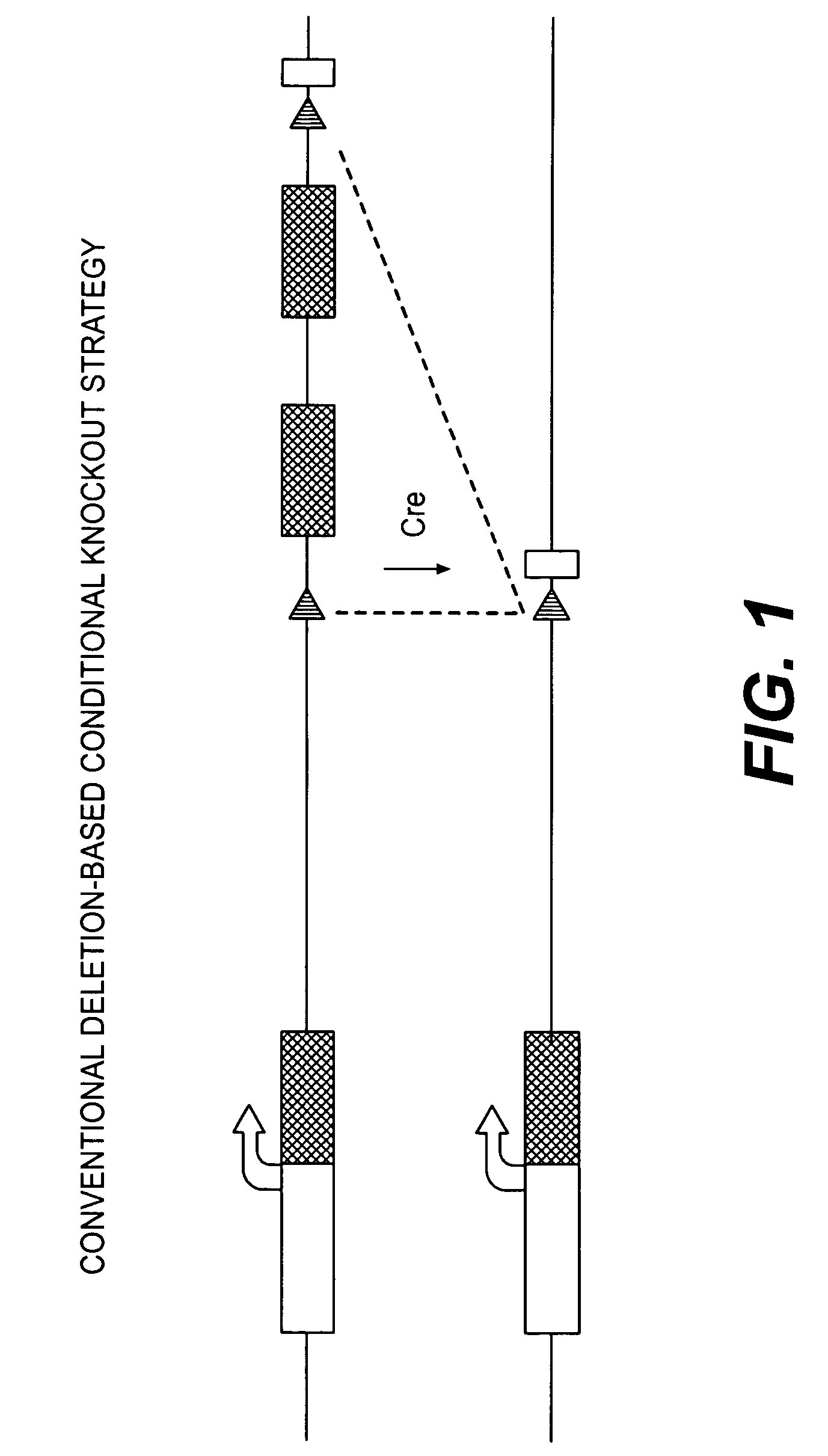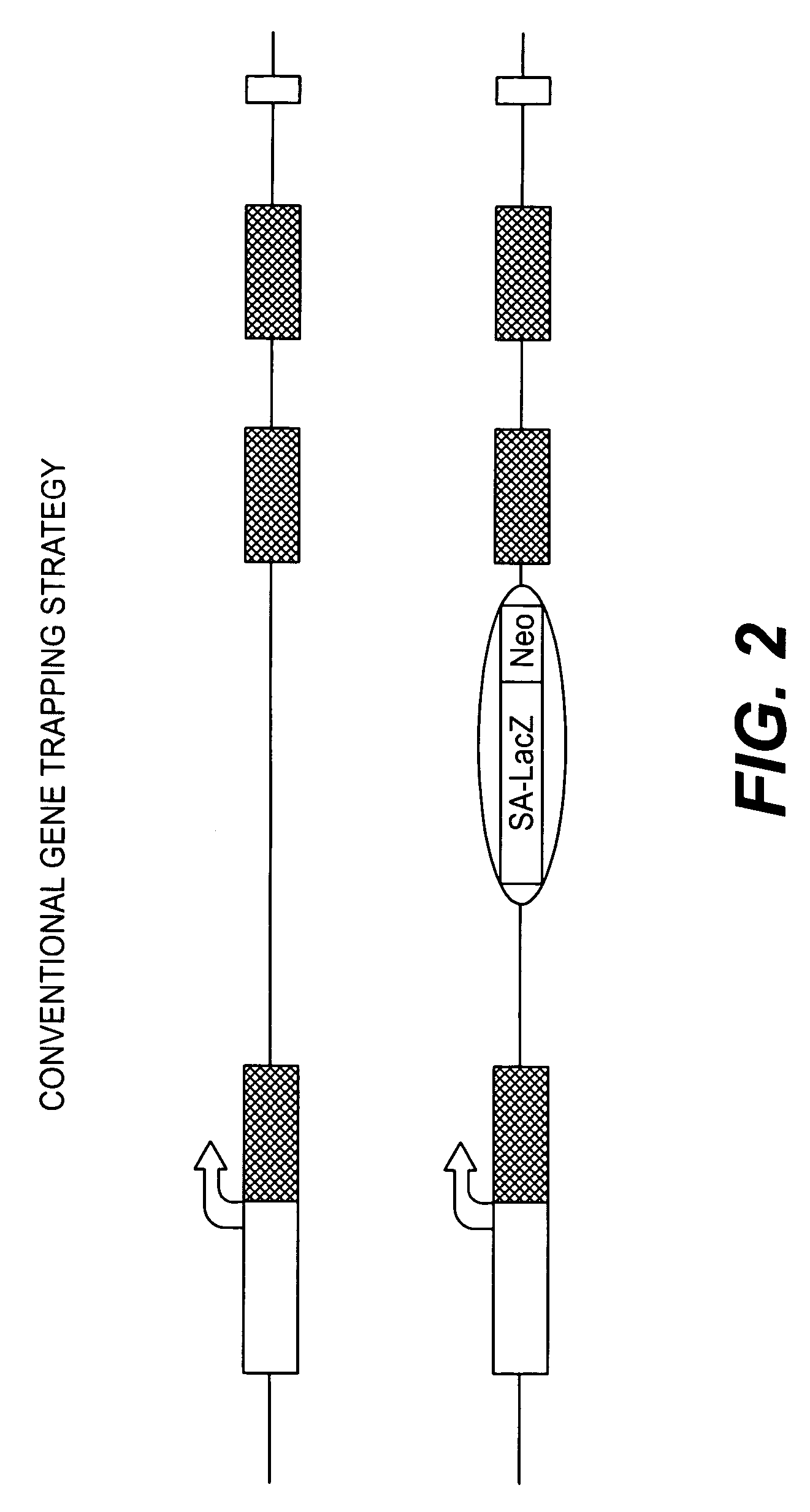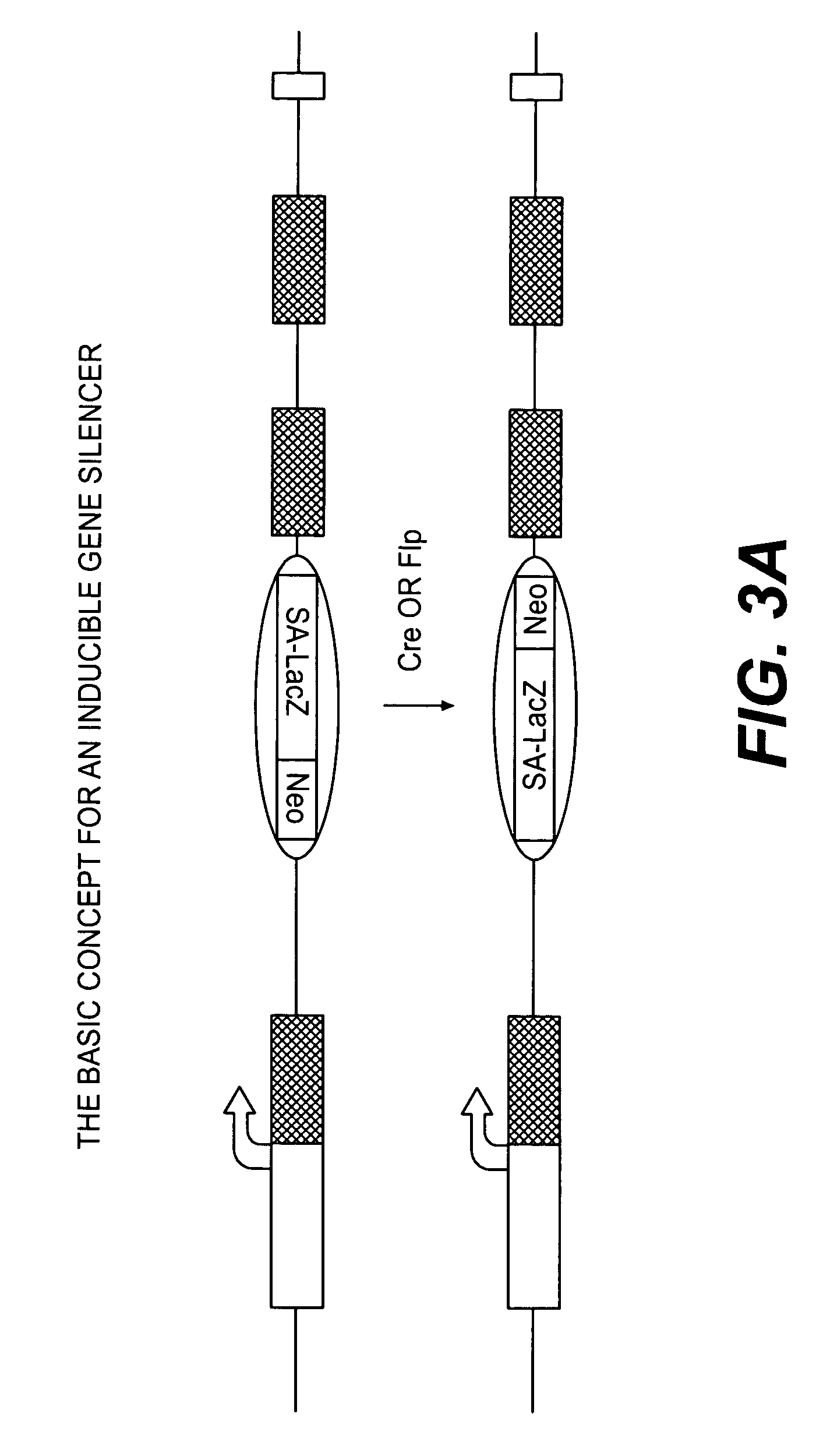Conditional knockout method for gene trapping and gene targeting using an inducible gene silencer
a gene silencer and conditional knockout technology, applied in the field of gene manipulation, can solve the problems of no control over when a gene might be knocked out, developmental lethality, and the inability to further pursue a study of the later role of the gene, and achieve the effect of less genetic manipulation and efficient insertion into the target gen
- Summary
- Abstract
- Description
- Claims
- Application Information
AI Technical Summary
Benefits of technology
Problems solved by technology
Method used
Image
Examples
example 1
Construction of the Inducible Gene Silencer (IGS) Element and In Vitro Testing of this Element for CRE-Mediated Inversion
[0064]In this example, we prepared the inducible gene silencer (IGS) element, shown in FIGS. 12A to 12D, using standard recombinant techniques. Also, in this example, we verified whether the inducible gene silencer shown in FIGS. 12A to 12D inverted correctly upon the addition of Cre recombinase in vitro. The following materials and methods were used in these experiments.
[0065]Construction of an Inducible Gene Silencer (IGS). An inducible gene silencer (IGS) was constructed in the pBluescript II SK+ plasmid (pBS-SK+), available from Stratagene. Lox66 and Lox71 sites were placed into pBS-SK+ by annealing single stranded oligonucleotides and ligating them into the XhoI and Hind III sites, respectively, to generate pBS-lox66,71. The oligonucleotide sequences 5′TCGAGTACCGTTCGTATAGCATACATTATACGAAGTTATC (SEQ ID NO: 15) and 5′TCGAGATAACTTCGTATAATGTATGCTATACGAACGGTAC (SEQ...
example 2
Functional Testing of the Inducible Gene Silencer by Transient Expression in Mouse Embryonic Fibroblasts
[0068]After constructing the inducible gene silencer of FIGS. 12A to 12D, we conducted some functional tests with the inducible gene silencer inserted into various reporter plasmids. The materials and methods that we used for this experiment, as well as the results are provided below.
[0069]Testing the silencing activity of the inducible gene silencer with a reporter plasmid transiently transfected into mouse fibroblasts. The IGS was subcloned in both the inert and knockout orientations into the XbaI site of the intron of the reporter construct PCX-RFP as an NheI fragment to generate pCX-IGSInert-RFP and pCX-IGSKO-RFP. The reporter plasmids were transfected into primary mouse embryonic fibroblast (MEF) cells using lipofectamine reagent (Invitrogen). Control plasmids pCX-EGFP and pCX-RFP were used to control for expression and detection of the RFP and GFP fluorescent reporters. Fluo...
example 3
Functional Testing of the Conditional Exon by Gene Targeting of the HPRT Locus in ES Cells
[0071]In order to test the inducible gene silencer for its ability to inducibly silence a target gene, we targeted this element to the HPRT locus in mouse ES cells and evaluated the function of this element in both the inert and the KO orientation. The methods used in these studies are as follows.
[0072]Methods: Construction of the HPRT-IGS Targeting Vector. An HPRT targeting vector was generated by inserting the IGS as a BamHI fragment, in the inert orientation, by blunt end ligation into the EcoRV restriction site in intron one of the HPRT genomic clone, pBS-HPRT6.5 (a gift from Peter Detloff). (Plasmid pBS-HPRT6.5 is described in Ordway, Jared M., et al., “Ectopically expressed CAG repeats cause intranuclear inclusions and a progressive late onset neurological phenotype in the mouse”, Cell, Dec. 12, 1997, vol. 91, pp. 753-763, the content of which is herein incorporated by reference.) A Frt f...
PUM
 Login to View More
Login to View More Abstract
Description
Claims
Application Information
 Login to View More
Login to View More - R&D
- Intellectual Property
- Life Sciences
- Materials
- Tech Scout
- Unparalleled Data Quality
- Higher Quality Content
- 60% Fewer Hallucinations
Browse by: Latest US Patents, China's latest patents, Technical Efficacy Thesaurus, Application Domain, Technology Topic, Popular Technical Reports.
© 2025 PatSnap. All rights reserved.Legal|Privacy policy|Modern Slavery Act Transparency Statement|Sitemap|About US| Contact US: help@patsnap.com



